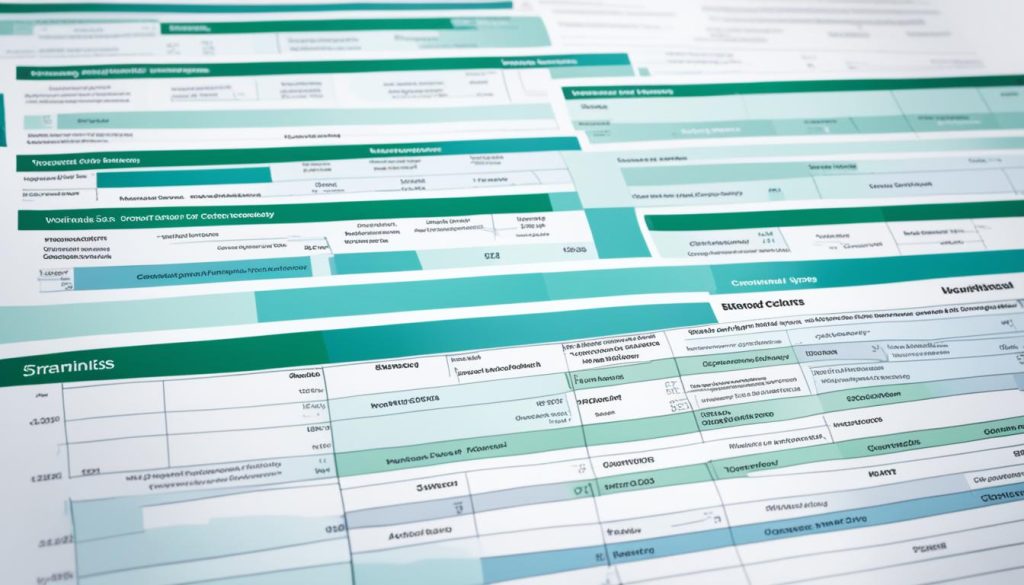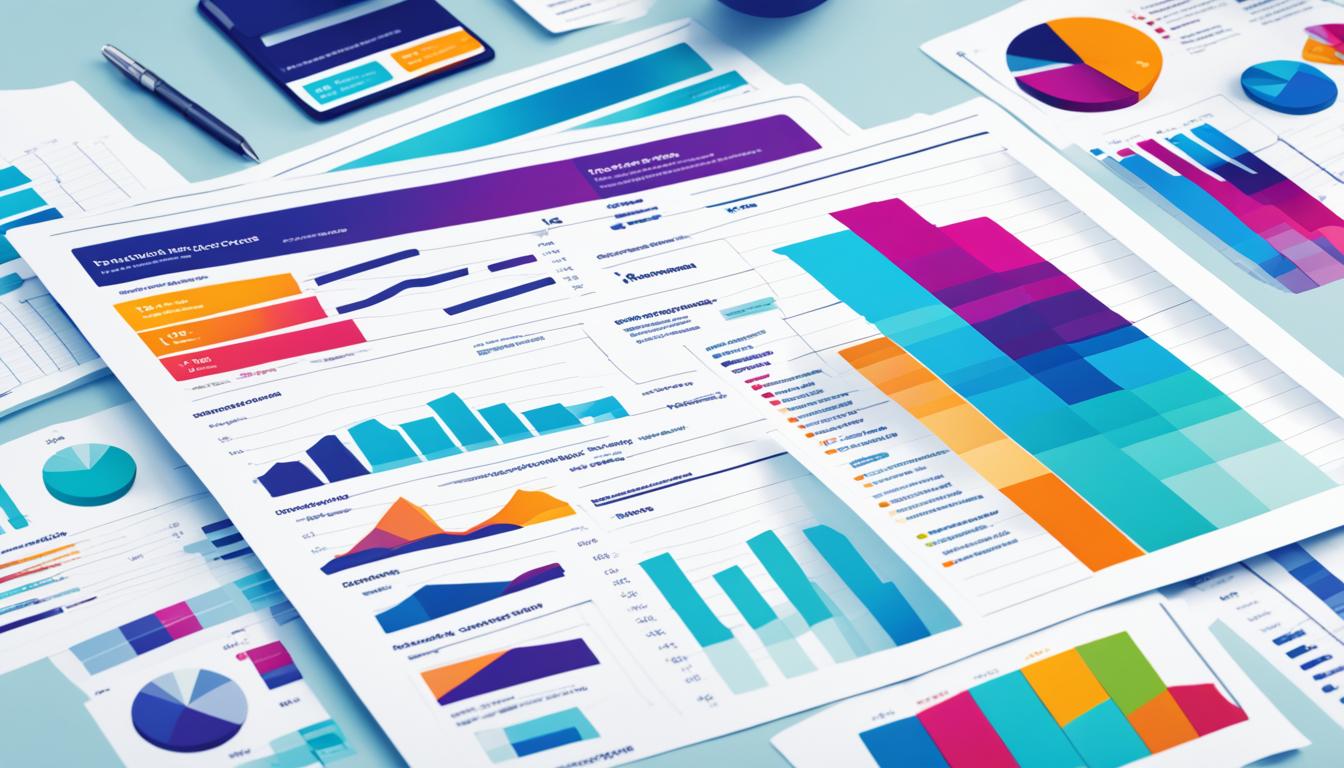Making Tax Digital (MTD) is a government scheme designed to streamline your business finances by embracing digital tax software and online tax filing.
This initiative encourages businesses to manage their tax records online through dedicated software, simplifying the process of record-keeping and payment. By adopting the MTD system, businesses can reduce costly administrative errors and ensure compliance with UK tax regulations.
Currently, MTD applies to Value Added Tax (VAT), with plans to expand to other forms of business tax in the future. It requires businesses to maintain digital records, submit tax data, and make payments through a digital system.
This move towards digitalization brings several benefits, such as improved accuracy, reduced likelihood of errors, and efficient direct submission of records to HMRC.
What is Making Tax Digital and Why is it Important?
Making Tax Digital (MTD) is an integral component of the UK government’s tax administration strategy. Its primary objective is to narrow the tax gap by mandating businesses and individuals to maintain digital records, utilize software compatible with the MTD system, and provide updates on a quarterly basis.
By bringing the tax system closer to real-time, MTD facilitates easier tax compliance for businesses and decreases the amount of tax lost due to preventable errors.
The importance of Making Tax Digital extends beyond streamlining tax processes. It enhances the accuracy of digital records, offers additional support through software products, and enables businesses to directly submit their digital records to HMRC, the UK tax authority.
Implementing MTD necessitates digital record-keeping, ensuring compatibility with MTD software, and submitting regular updates. By adhering to these requirements, businesses can benefit from increased accuracy and efficiency in their tax record management.
Furthermore, the digital nature of MTD provides businesses with a real-time view of their tax responsibilities, enhancing their ability to fulfill their obligations promptly. Through software products tailored for MTD, businesses can automate several tasks, simplifying their tax management processes and minimizing the risk of errors.
The Impact of MTD on UK Tax Regulations
Making Tax Digital is a transformative initiative that aligns with the UK’s tax regulations by promoting digital record-keeping. This shift empowers businesses to maintain comprehensive and accurate tax records, which are crucial for fulfilling their tax obligations.
With the introduction of MTD, the emphasis on manual record-keeping methods such as paper-based or spreadsheet accounting is gradually diminishing. The adoption of digital record-keeping under MTD ensures compliance with the evolving tax regulations and fosters a more efficient tax system.
Benefits of Using MTD for Your Business Finances
Using Making Tax Digital (MTD) for your business finances can bring several advantages, making it an essential tool for modern businesses.
By integrating tax management with other core business processes through dedicated accounting solutions for MTD, you can streamline your operations and unlock significant benefits.
Improved Accuracy and Reduced Errors
One of the key benefits of MTD is its ability to enhance the accuracy of your digital records. By utilizing digital tax software, you can reduce the likelihood of manual errors that can occur during traditional record-keeping and tax filing methods.
With MTD, the data is automatically updated, ensuring that your records are up-to-date and accurate at all times.
Efficient and Time-Saving Tax Filings
MTD simplifies the tax filing process by enabling direct submission of records to HMRC, eliminating the need for manual data entry.
By leveraging accounting solutions for MTD, such as cloud-based digital tax software, you can save time and effort in preparing and submitting your tax returns. The software streamlines the entire process, making it quicker and more efficient.
Compliance with UK Tax Regulations
Using MTD ensures that your business stays compliant with UK tax regulations. By adopting digital tax software that is compatible with MTD, you can keep up with the evolving requirements and seamlessly meet your tax obligations.
This not only helps you avoid costly penalties but also instills confidence in your stakeholders, demonstrating your commitment to financial transparency and good governance.
Enhanced Productivity and Digitalization
MTD encourages businesses to embrace digitalization and adopt accounting solutions that integrate tax management with other financial processes.
This holistic approach to financial management improves productivity by streamlining workflows and minimizing manual tasks. By digitizing your financial records, you can access real-time insights, make informed decisions, and unlock new growth opportunities for your business.
To fully reap the benefits of Making Tax Digital, it’s important to choose the right accounting software for MTD that aligns with your business needs. Look for solutions that offer seamless integration, robust features, and user-friendly interfaces to optimize your tax management process.
By embracing MTD and utilizing accounting solutions tailored for it, you can transform your business finances, streamline operations, and stay ahead in an increasingly digital business landscape.

Difference Between MTD and Traditional Tax Filing
When it comes to tax filing, there are significant differences between the traditional approach and Making Tax Digital (MTD). The method of record-keeping and submission sets them apart, offering distinct advantages and efficiencies.
Traditional Tax Filing
In the traditional tax filing process, businesses typically rely on paper-based or spreadsheet accounting methods. This involves manually entering data into HMRC’s website, which can be time-consuming and prone to errors. The reliance on physical documents and manual data entry makes it difficult to maintain an accurate real-time view of tax responsibilities.
Making Tax Digital
Making Tax Digital, on the other hand, revolutionizes the tax filing experience by requiring businesses to maintain digital records and use compatible software for submission.
By eliminating the need for manual data entry, MTD provides a more efficient and accurate way of managing tax responsibilities.
With digital record-keeping, businesses can store and update their financial information digitally, allowing for real-time tracking and analysis.
This not only streamlines the tax filing process but also reduces the likelihood of errors. MTD ensures that businesses have an accurate view of their tax responsibilities, enabling them to make better-informed decisions.
Making Tax Digital brings several benefits to businesses, such as improved accuracy, reduced administrative burden, and enhanced visibility of tax obligations. By embracing digital tax software and online tax filing, businesses can streamline their financial processes and stay compliant with UK tax regulations.
| Traditional Tax Filing | Making Tax Digital |
|---|---|
| Reliance on paper-based or spreadsheet accounting | Requires digital record-keeping |
| Manual data entry into HMRC’s website | Automated submission through compatible software |
| Limited real-time view of tax responsibilities | Real-time tracking and analysis |
| Higher likelihood of errors | Reduced likelihood of errors |
By embracing the benefits of Making Tax Digital and transitioning from traditional tax filing, businesses can enjoy a more streamlined and efficient approach to managing their finances. MTD simplifies the tax filing process, allowing businesses to focus more on core operations and growth.
How to Get Started With Making Tax Digital?
To get started with Making Tax Digital (MTD), businesses must ensure they have compatible software that can connect to HMRC’s system. Fortunately, most existing accounting software programs are already compatible with MTD, making it easier for businesses to transition and streamline their tax management process.
If a business doesn’t already use accounting software, they will need to acquire one that is MTD-compatible. There are several reputable software providers in the market, such as QuickBooks, Xero, and Sage, that offer MTD-ready solutions.
Once the software is in place, businesses can proceed with the MTD registration process. This can be done through the government’s MTD page, where businesses will need to provide essential information, including their Government Gateway ID and password, VAT number, and other relevant business details.
After successfully registering for MTD, businesses can start taking advantage of the benefits of digital tax filing. They can use the software to keep digital records, submit their tax data, and make payments directly through the system. With MTD, businesses can easily stay compliant with UK tax regulations while optimizing their tax management process.

Benefits of Getting Started With Making Tax Digital
Implementing MTD offers numerous benefits for businesses.
- Streamlined tax management: MTD simplifies the process of record-keeping, submission, and payment, reducing the risk of costly errors.
- Real-time view of tax responsibilities: With digital records and regular updates, businesses can have a clear and up-to-date understanding of their tax obligations.
- Enhanced accuracy: Digital records and integrated software help minimize the likelihood of manual data entry errors, ensuring accurate tax filings.
- Improved efficiency: MTD eliminates the need for manual data entry, allowing businesses to save time and effort on tax-related tasks.
- Better compliance: By following the MTD requirements, businesses can stay compliant with UK tax regulations and avoid penalties.
Getting started with Making Tax Digital is a crucial step towards modernizing and streamlining your business finances. By embracing digital tax filing, businesses can save time, reduce errors, and ensure accurate tax management.
| Steps to Get Started With Making Tax Digital | Notes |
|---|---|
| 1. Ensure compatibility of accounting software | Check if your existing software is MTD-compatible; if not, acquire MTD-ready software. |
| 2. Register for MTD | Visit the government’s MTD page and provide the required information for registration. |
| 3. Set up digital records | Start maintaining digital records using the MTD-compatible software of your choice. |
| 4. Submit tax data | Use the software to submit your tax data directly to HMRC. |
| 5. Stay updated | Regularly check for updates from HMRC and stay informed about changes in the MTD system. |
Common Challenges and Solutions for Implementing Making Tax Digital
Implementing Making Tax Digital may present several challenges for businesses. One of the key challenges is transitioning from paper-based or spreadsheet accounting to a digital system. This shift requires businesses to adapt their processes and workflows to comply with Making Tax Digital requirements. It may involve training employees on how to use new software or updating existing systems to become compatible with Making Tax Digital.
Another challenge is ensuring the compatibility of existing software with Making Tax Digital. Not all accounting software may be compatible with the requirements of Making Tax Digital. Businesses need to evaluate their existing software solutions and determine if they need to find alternative software or explore options for integration to meet the needs of Making Tax Digital.
Adapting to the new process of digital record-keeping and submission is also a significant challenge. Businesses may be accustomed to traditional methods of record-keeping and tax filing, and the transition to digital record-keeping may require a change in mindset and processes. This can include understanding the digital record-keeping requirements, implementing new processes, and ensuring accurate submission of tax data through the digital system.
Fortunately, there are solutions available to address these challenges. Businesses can seek support from various resources such as MTD webinars, YouTube guidance videos, and email updates from HMRC. These resources provide valuable information and insights into implementing Making Tax Digital and can help businesses navigate the challenges they may encounter.
Moreover, businesses can explore MTD-compatible accounting software options that are specifically designed to meet the requirements of Making Tax Digital. By choosing the right software, businesses can streamline their tax processes, ensure accuracy, and simplify the transition to digital record-keeping and submission.
Tips for Streamlining Your Business Finances With Making Tax Digital
To streamline your business finances with Making Tax Digital (MTD), there are some key tips to follow. Firstly, ensure that all your relevant records are kept digitally and regularly updated in your chosen software. This will provide you with a real-time view of your tax responsibilities, making it easier to manage them effectively.
Secondly, take full advantage of the additional features and help offered by MTD-compatible software. These tools can significantly improve the accuracy and efficiency of your financial processes, saving you time and reducing the risk of errors. Explore the various options available and select the software that best meets the needs of your business.
Lastly, it is crucial to stay informed about updates and changes in the Making Tax Digital system. The easiest way to do this is by using the MTD app or subscribing to email updates from HMRC. Regularly reviewing and adapting your financial processes according to the latest guidelines will ensure that you optimize your tax filings and stay compliant with the UK tax regulations.
By following these tips and utilizing the features of Making Tax Digital, you can streamline your business finances, improve accuracy, and save valuable time. Embracing the power of the MTD app and using MTD-compatible software will enable you to manage your tax responsibilities more efficiently, leaving you more time to focus on growing your business.
Conclusion
In conclusion, adopting Making Tax Digital (MTD) can revolutionize the way businesses manage their finances by streamlining processes, minimizing errors, and providing valuable insights. Embracing digital tax systems not only enhances efficiency in tax reporting but also enables better decision-making and strategic planning.
By staying informed, leveraging digital tools, and seeking professional guidance, businesses can navigate the MTD landscape effectively and position themselves for financial success. Embrace MTD to simplify your tax obligations, optimize financial operations, and propel your business towards a digitally connected and prosperous future.
FAQs
Is Making Tax Digital compulsory?
Yes, Making Tax Digital (MTD) is compulsory for most businesses and organizations that meet the VAT threshold. As of April 1, 2022, VAT-registered businesses with a taxable turnover above £85,000 are required to keep digital records and submit their VAT returns using MTD-compatible software. Compliance with MTD aims to modernize the tax system, improve accuracy in reporting, and facilitate easier access to financial information.
What does Making Tax Digital mean for accountants?
Making Tax Digital has significant implications for accountants, requiring them to adapt their practices to comply with digital record-keeping and filing requirements. Accountants play a pivotal role in guiding businesses through the transition to MTD, providing expertise in implementing digital accounting solutions, ensuring compliance with HMRC regulations, and offering strategic advice on managing finances efficiently in a digital environment.
What is the threshold for Making Tax Digital?
The threshold for Making Tax Digital currently applies to VAT-registered businesses with a taxable turnover above £85,000. These businesses are mandated to keep digital records and submit VAT returns using MTD-compatible software. The threshold serves as a criterion for determining which businesses must comply with MTD requirements and transition to digital tax systems to streamline their financial processes.
Who is exempt from Making Tax Digital?
Certain businesses and individuals may be exempt from Making Tax Digital based on specific criteria set by HM Revenue & Customs (HMRC). Exemptions may apply to businesses with religious objections to electronic communication, those who cannot use digital tools due to age, disability, location, or other reasons, and individuals subject to insolvency procedures. It’s essential to review HMRC guidelines to determine eligibility for exemptions from MTD obligations.
Do all self-employed have to go digital?
Not all self-employed individuals are required to go digital under Making Tax Digital. The MTD mandate primarily applies to VAT-registered businesses with a taxable turnover above the threshold (£85,000 as of April 2022) for VAT purposes. However, even if not mandated, self-employed individuals can benefit from transitioning to digital record-keeping and tax filing to streamline their financial management processes, enhance accuracy, and gain better control over their financial affairs.





